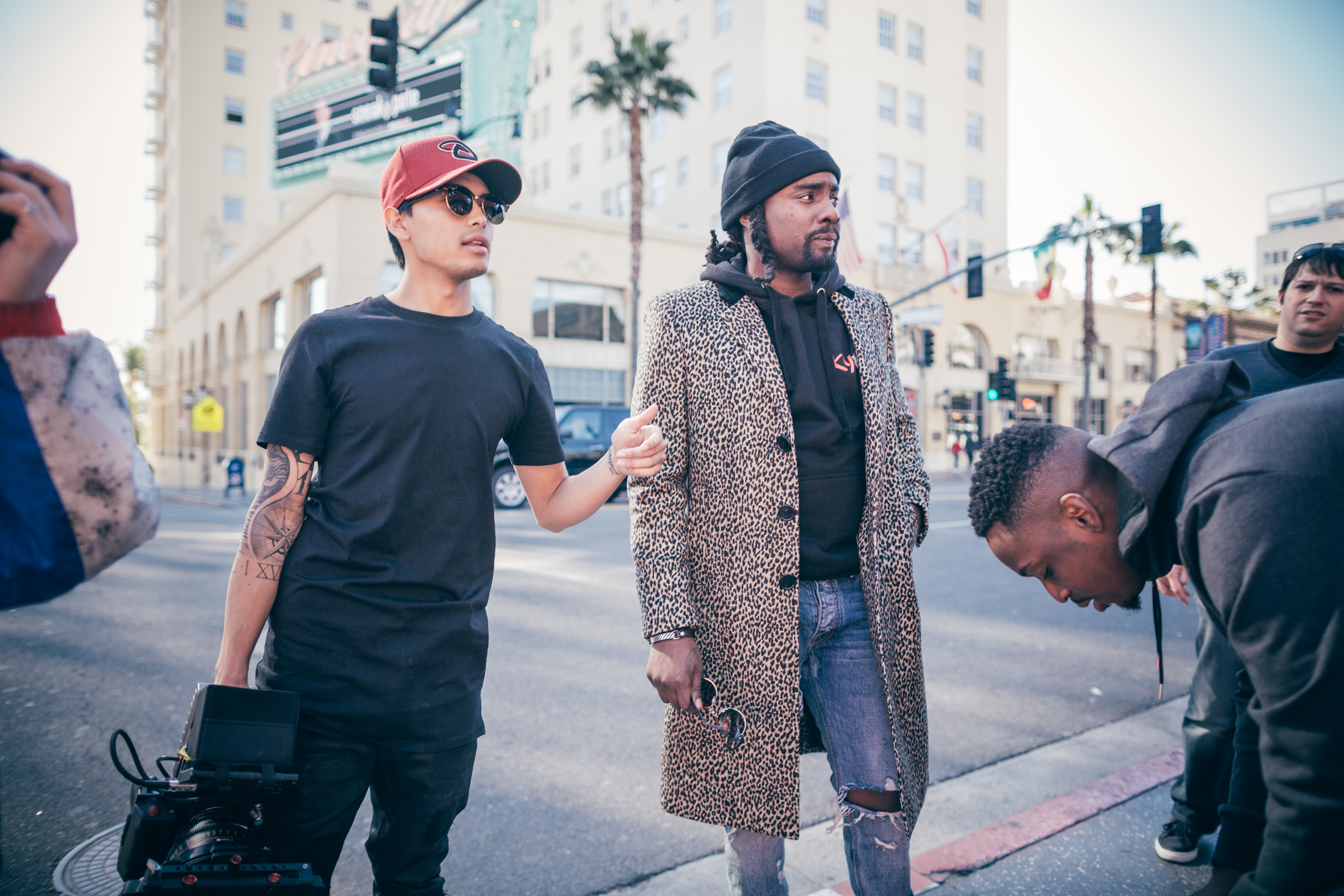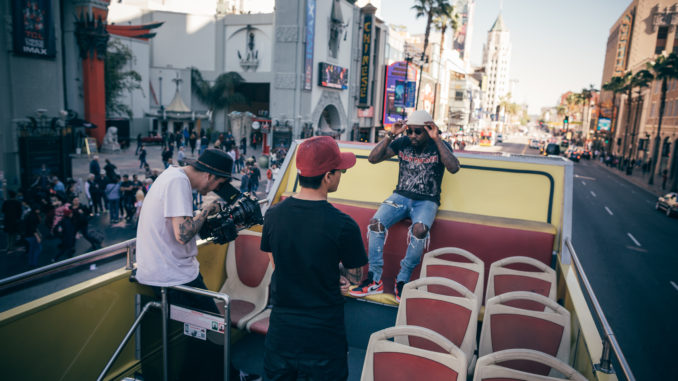It’s been about a week since Wale dropped the visuals for his colorful single “Groundhog Day.” The song was received by many as a response to J. Cole’s “False Prophets,” but it’s much deeper than that. The video correlated with the song perfectly, as both had a deeper, complex meaning, that many may have overlooked.
The Cam Fairfax-directed video begins with clips of media personalities criticizing Wale. From there it goes on to show the rapper riding on a double decker bus and taking a stroll through Hollywood’s “Walk of Fame,” where he is met by an abundance of fans. After the original song comes to an end, it transitions into a static effect, where Wale lays down an extended verse.
None of this was planned according to Fairfax, who received a text from Wale on a Wednesday asking to shoot the video on that Friday. In fact, there was no plan, no video treatment, no security, no permits, no massive entourage, no budget. It was just Wale, Cam, Phil Ade, and Cam’s Director of Photography that made the trip to Hollywood Blvd. on that Friday morning.
“The plan was to have no plan,” said Fairfax. “He had just got off this “PYT” video that Colin Tilley directed and cost all this money and it looked amazing, but this video was just about getting back to the roots.”
Cam’s original plan was to go big, but many of his ideas didn’t end up making it. In his mind as a director the idea of having a $100,000+ budget was a fixed notion in his head. That notion was an epiphany for Fairfax, who was told by Wale that he preferred a guerrilla style, grassroots video, because it wouldn’t make sense being that the song wasn’t talking about material things, having money, or flashy cars. “I’m speaking about my life right now,” Wale said to Cam.
Wale’s words hit home for Cam, who reminisced on his early days as a director before he worked on big budget productions.
“He wanted to take it back to the original days when he first started shooting videos and making music and in doing so it took me back,” explained Cam. “We found inspiration in a lot of other things, whether it’d be other people, or a street sign matched a specific bar, a rugged terrain, the way the camera moved when he said a specific word, everything was based on gut feeling.”
It didn’t take a long time for the two to get on the same page. Throughout the shoot the ideas began to naturally flow. For Cam the vision became clear as the footage rolled. Wale was in his natural habitat of “Wale being Wale,” a man of the people.
During the shoot while Wale took pictures with a fan, a man came up to him and just started rapping. Cam recalls Wale being into it and listening so intently, that he gave the man his number and told him to send him some music. None of which was planned, or highlighted in the video.
“That’s who he is at the end of the day,” Cam said. “It was never my intentions to use any of it, but it just felt right when the song started to come to life, I was just like fuck this industry shit, let’s just let Wale be Wale and show everyone who he is.”
When it came down to editing the video, Cam’s goal was to manifest key elements like expanding the b-roll on certain lyrics, so it wouldn’t overwhelm the viewer and take away from the song. The way the video was colored was another thing. Cam did it in a specific way to give it a certain aesthetic. If there was a specific shot where they wanted you to really listen, the camera wouldn’t move and would be tightly focused on Wale.
“There’s a lot of little things like that in there that I really wanted to dial in and they maybe aren’t noticeable on first look,” he said. “But I want you to go back and watch it and try to figure out what we did there and sometimes you don’t catch it and that’s the point.”
The 5-minute extended verse was not in the plans during the original shoot. Wale called Cam with the idea of the verse and sent it over. Cam’s first reaction was he didn’t have enough footage for it, so the two decided to go with the static effect to keep viewers drawn to the screen, while not taking away from the words.
“This needed to be focused on the lyricism just because that’s what this song is, it’s the raps, it’s poetry,” Cam said.
The video needed to come out six days after it was shot to coincide with Groundhog Day. Videos usually take weeks if not months to be completely edited, colored, and perfected. Wale worked on the extended verse for about two days straight and sent the final to Cam on the same day the video was set to drop.
“I remember I was up for a little over 40 hours straight working on it,” explained Cam, as he flipped through photos for another project he’s currently working on. “I just wanted to make something that was visually stimulating and reciprocated the lyrics.”
In the end Cam matched the final extended verse to be somewhat of a response to the intro clips where different media personalities are talking down on Wale. That was meant to be a highlight because it’s become evident that Wale catches the backend of the media. Cam wanted to make it a point that it doesn’t go unnoticed and Wale acknowledges it by combatting it with music.
“It was for him to show he acknowledges it and almost embraces it,” Cam said. “That 5-minutes was just him saying, “I get what you’re saying, but don’t act like I’m not one of the best doing it” because if you’re truly a hip-hop fan you gotta put Wale up there with the Kendricks, the Coles, and the Drakes.”
@IAMBNYCE




We’re a group of volunteers and starting a new scheme in our community.
Your website offered us with valuable information to work on. You’ve performed an impressive job
and our whole community will likely be grateful to you.